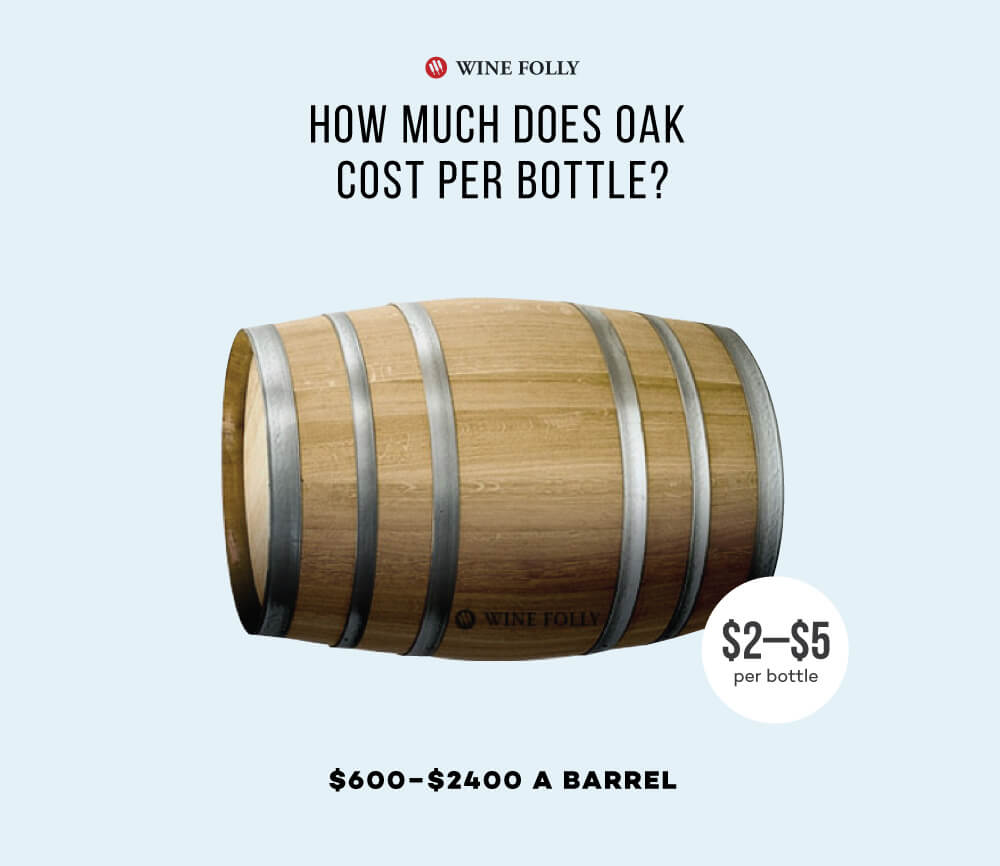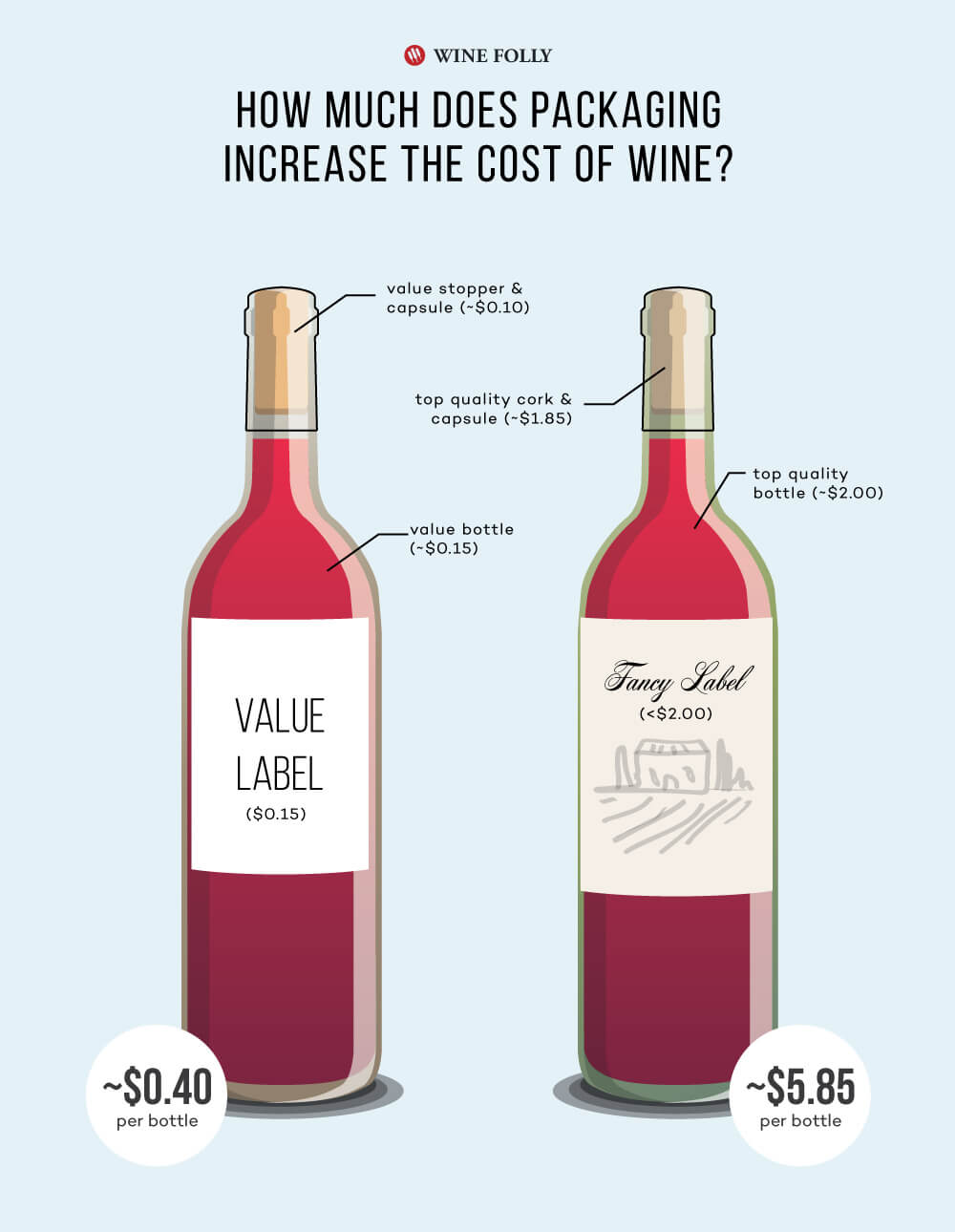If you’ve ever found yourself standing in the wine aisle gawking at the prices, you may have also found yourself wondering,
“Is there really a difference between cheap and expensive wine?”
And,
“Is expensive wine better?”
To figure this out, let’s take a look at what it costs to make a bottle of wine.

The Cost of Wine Grapes
Grapes are one of several costs that go into producing a bottle of wine. So, to put real numbers behind this cost, I crunched some data from the 2017 California Grape Crush Report.
Here’s what I learned:
- $5 (for the actual wine part) affords one pretty decent quality juice.
- There is a substantial price variance between different grape varieties. (Merlot offers superb value!)
- Napa Valley is, by far, the most expensive place to buy wine grapes. Napa Cabernet Sauvignon costs $12.34 / bottle (weighted average).
- Some California producers spend as little as 49 cents a bottle for grapes from the Inland Valleys.
Of course, grapes aren’t the only costly thing that goes into making wine.

The Cost of Oak
Oak barrels range in price from about $600–$2400 a barrel, depending on the type of oak and quality level.
That means you can expect at least a $2 bump in cost per bottle if the wine uses oak. (BTW, it’s possible to do it cheaper using oak chips).
In case you didn’t already know, oak is most commonly used for red wines, although you’ll find oak ageing used for a few bold white wines too (like Chardonnay, White Rioja, etc).
While oak barrels are used over and over again, the strongest oak flavor compounds of vanilla, clove, and baking spice come from new barrels.
The Cost of Packaging
Presentation is everything!
Next up comes the packaging. Any pragmatist realizes that packaging isn’t important as long as it works. It’s what’s inside the bottle that matters, right?!? Still, it doesn’t stop us from being influenced by the way wine bottles look.
Here are some things you should know about packaging:
- The Punt: You know, that thumb-sized divot in the bottom of a wine bottle? It doesn’t really matter. If you find a bottle with a deep punt, it just means the bottle was more expensive.
- Screwcaps: We’ve been testing cork alternatives since the 1960s. What we’ve learned is that they work, and in many cases, are more consistent than natural corks.
- Low Shoulder vs High Shoulder: Low shoulder bottles (e.g. “Burgundy Bottles”) are the “it” bottle these days but don’t fit in most wine racks or stack on top of each other. To a collector, they’re a bit of a pain in the ass.
- Heavy Bottles: Some bottles are so heavy that they make up 60% of the weight of the unit. The weight isn’t bad until you realize it costs extra fuel to transport heavy bottles. That being said, they do feel impressive…
- Glass Color: Clear glass doesn’t protect wine from light strike, and green glass doesn’t do that much better. Surprisingly, brown glass is an effective UV protector, but hasn’t quite caught on yet. Brown glass is affordable.
In researching packaging costs, I learned that increased spending on bottles might be better treated like a built-in marketing cost.

Adding It Up
As an experiment, I took the average prices for wine grapes from the higher quality growing zones of California and created two examples. Of course, this experiment doesn’t include the cost of winery labor, facilities expenses, and what not, but I still found it illuminating.
Merlot vs. Cabernet Franc
Using Merlot grapes with American oak and value packaging ended up costing around $5 a bottle.
The increased prices for Cabernet Franc grapes, fancy French oak barrels, and prestige packaging bumps the cost up by three times, making it around $16 a bottle.
So, is cheap wine better than expensive wine?
Apparently, it really depends on your desire to drink outside the box.
